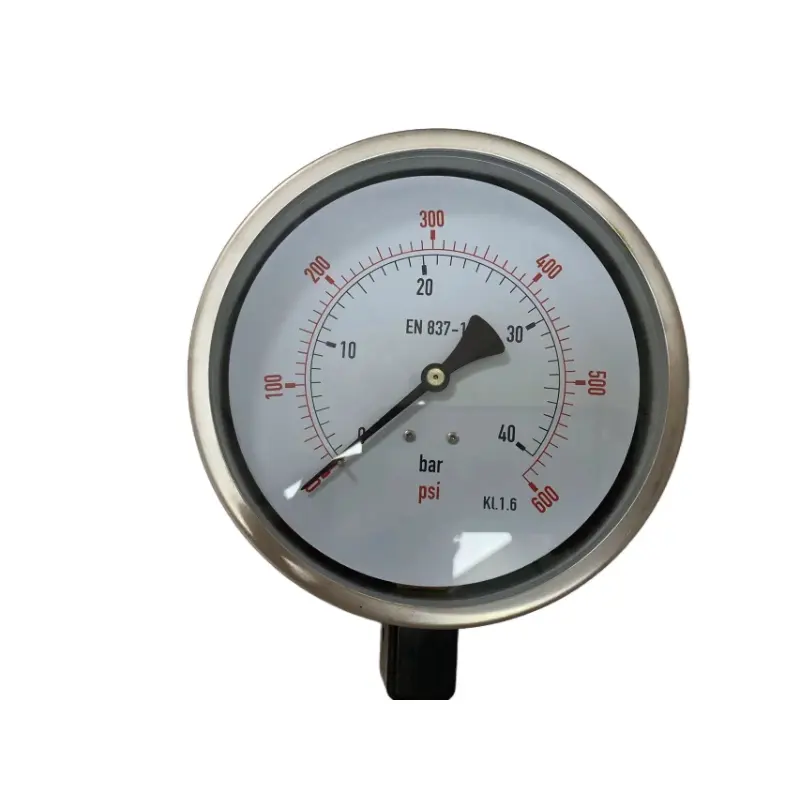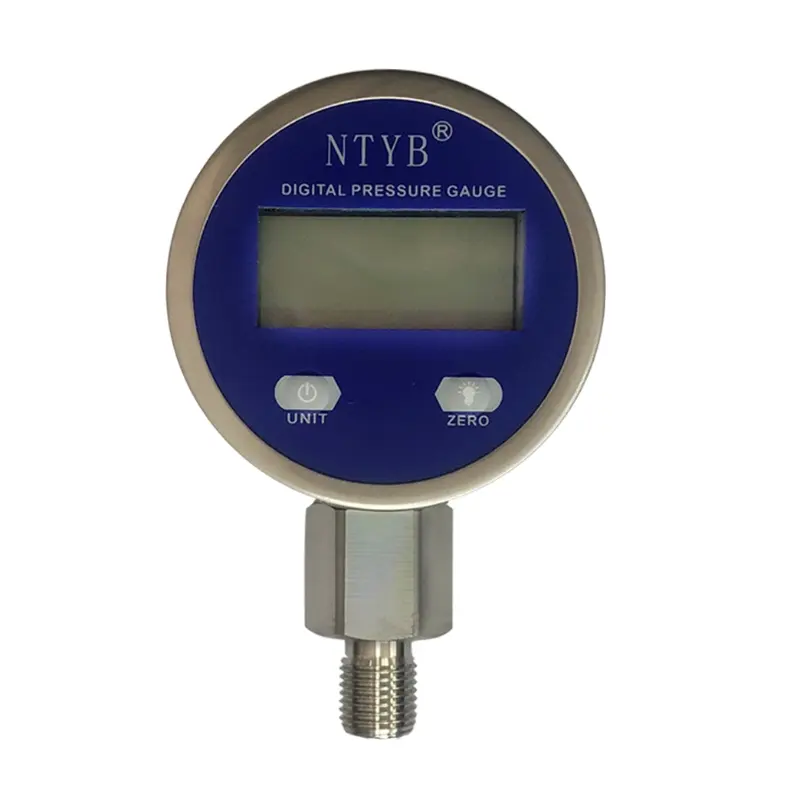Comprehensive guide to choosing stainless steel pressure gauges
Release time: 2025-06-25
Stainless steel pressure gauges are widely used in many industrial fields such as chemical, electric power, petroleum, and pharmaceuticals. Due to their excellent corrosion resistance, high temperature resistance, and shock resistance, they have become an indispensable tool for pressure measurement. Choosing the right stainless steel pressure gauge can ensure measurement accuracy, improve equipment safety, and extend service life. This article will help you fully understand how to choose stainless steel pressure gauge according to actual needs.
Table of Contents
Basic characteristics of stainless steel pressure gauges
Stainless steel pressure gauges use stainless steel shells and can effectively cope with pressure measurement needs in harsh environments. Common models include mechanical pressure gauges and electronic pressure gauges. Their main features are as follows:
Mechanical pressure gauges: display pressure through pointer changes, simple structure, suitable for general industrial environments.
Electronic pressure gauges: convert pressure signals into electronic signals through sensors and display digitally, with high accuracy, suitable for precision measurement.
Diaphragm pressure gauges: suitable for corrosive and high-viscosity media, commonly found in the petroleum, chemical, and pharmaceutical industries.
Remote pressure gauges: transmit pressure data to the control center through remote transmission equipment, suitable for applications that require remote monitoring.

Key factors when choosing a stainless steel pressure gauge
When purchasing a stainless steel pressure gauge, you need to consider the following important factors:
1.Pressure range
Choose a suitable pressure range according to the actual working environment to ensure that the pressure gauge’s range covers the maximum pressure in the actual application. Common ranges include 0-1 MPa, 0-10 MPa, 0-100 MPa, etc.
2.Accuracy requirements
The accuracy level of the pressure gauge determines the accuracy of the measurement results. Generally speaking, the accuracy level ranges from 1.0 to 2.5. For occasions with higher accuracy requirements, a higher accuracy pressure gauge (such as 1.0) needs to be selected.
3.Connection method
The connection method of the pressure gauge should be selected according to the type of equipment interface. Common connection methods include threaded connection, flange connection and clamp connection. When purchasing, make sure it matches the equipment interface.
3.Working medium
Choose a pressure gauge suitable for different working media. For corrosive media, a pressure gauge with a diaphragm is more suitable, which can effectively protect the pressure gauge from damage.
4.Temperature range
Ensure that the pressure gauge is adapted to the temperature range of the use environment. For high temperature environments, it is more appropriate to choose a high temperature resistant or diaphragm pressure gauge.
5.Protection level
In humid or corrosive environments, choosing a pressure gauge with a higher protection level (such as IP65, IP67) can effectively prevent water and dust from entering, ensuring the long-term reliable operation of the equipment.
Common types and applications of stainless steel pressure gauges
According to different application requirements, there are many types of stainless steel pressure gauges to choose from:
Clamp pressure gauge: simple structure, suitable for conventional industrial environments, provides excellent sealing and shock resistance, and is widely used in chemical, electric power, pharmaceutical and other industries.
Flange clamp pressure gauge: using laser welding technology, suitable for high pressure and high temperature environments, often used in high pressure workplaces such as oil and natural gas.
Large dial stainless steel pressure gauge: the dial diameter is large, suitable for occasions that require remote reading, such as large equipment and high temperature and high pressure environments.
Electronic stainless steel pressure gauge: provides higher measurement accuracy, suitable for occasions requiring precise measurement.
Diaphragm pressure gauge: suitable for corrosive or high viscosity media, widely used in chemical, petroleum and pharmaceutical industries.
How to choose a stainless steel pressure gauge
When choosing a stainless steel pressure gauge, you can follow the following steps:
Clarify application requirements: Determine your pressure measurement requirements, including pressure range, accuracy requirements and media type.
Choose a reputable brand: Choosing a well-known brand can ensure product quality and after-sales service.
Consult professional suppliers: If you are not sure which model is suitable, contact a professional supplier for advice.
Why choose NTYB to buy stainless steel pressure gauges?
As a professional industrial pressure gauge supplier, NTYB provides a variety of stainless steel pressure gauges to meet different working environments and application requirements. Our advantages include:
Rich industry experience: NTYB has accumulated more than 20 years of manufacturing experience since its establishment in 2005.
Technological innovation and customized solutions: We provide customers with customized pressure gauge solutions according to their needs.
High-quality after-sales service: NTYB pays attention to service quality and ensures that customers can enjoy efficient after-sales service.
Conclusion
Choosing the right stainless steel pressure gauge is essential for the safe and efficient operation of equipment. By understanding the basic characteristics, selection factors and application scenarios of pressure gauges, you can make a more informed purchasing decision. If you have any questions or purchasing needs, please feel free to contact us, NTYB will provide you with the most professional service.


